In this, the
second Newsletter of the Year, I am very glad to report a very
good start to our Air Show Season; the five Events to date have
each been very successful.
However, the
biggest event to date is the Eastern Region taking
responsibility for Spitfire Enterprises Ltd, the section of The
Spitfire Society which manages our commercial activities. I am
very grateful to Jason Amiss for taking on this very important
job.
I feel sure
that you will all be in agreement with me in wishing Eric
Horwood a very quick and complete recovery after a serious eye
operation.
During February
we received the very sad news that Bert Harman had passed away.
We offer our deepest condolences to Audrey, Sara and Jonathan.
May I also take
this opportunity to thank you once again for your support.
David Williams
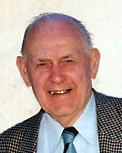

--------------------------------------------
In Memoriam
Alex Henshaw
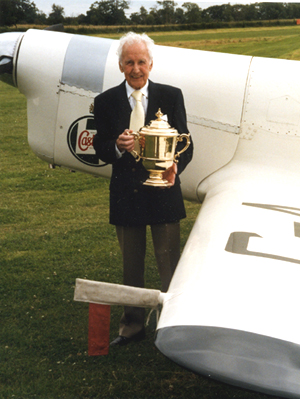
There can be
few men in the field of aviation who gain the high levels of
admiration and respect which were conveyed upon Spitfire Society
Vice-President Alex Henshaw who died in February of this year
aged 94.
Raised under
the wide, beckoning skies of Lincolnshire he began his flying
career aged twenty and owned a succession of small aircraft
including a Gipsy Moth, an Arrow Active and a Comper Swift,
with which he achieved some air-racing success. But it was with
the diminutive racing craft the Percival Mew Gull G-AEXF, with
which he would forever be associated, that Alex achieved fame
and his greatest victories, most notably the Kings Cup Air-race
which he won in 1938 and the England to Cape Town solo endurance
race a year later; in both events he broke records which remain
unbeaten to this day.
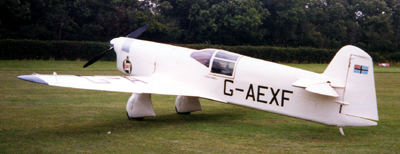
In the early
part of the war Alex flight-tested Spitfires alongside Jeffrey
Quill at Eastleigh, the birthplace of the Spitfire, and in 1940
was appointed Chief Test-Pilot at the massive assembly-plant at
Castle Bromwich. From here until 1946 he test flew well over two
thousand Spitfires, accounting for around ten-percent of all
aircraft produced and by far the highest number of individual
Spitfires flown by any one person. As well as Spitfires, Alex
also tested the mighty Avro Lancaster Bomber and is justifiably
famous for rolling the aircraft on occasion as part of the
test-programme, a feat which he would with characteristic
modesty play down, describing such a manoeuvre as well within
the capabilities of the aircraft.
The work itself
was, of course, highly dangerous and on more than one occasion
Alex came face-to-face with death, such as the occasion when his
stricken Spitfire, sans wings and tail, ploughed through the
garden of a terraced house miraculously depositing the
still-intact cockpit into the householder's kitchen. For his
services during the war he was awarded the MBE.
After the war
Alex remained the man of action, whether rescuing victims from
the great East-Coast floods of 1953 for which he was awarded the
Queen's Commendation for Bravery, or risking life-and-limb
traversing the mighty Congo as Director of Miles Aircraft (South
Africa) Ltd.
To attempt to
sum up Alex Henshaw's incredible life of adventure in these few
lines would he futile, but his three books ‘Flight of the Mew
Gull’, ‘Sigh for a Merlin’ and ‘Wings across the Great Divide’
go a long way to telling the full story. His love of flying
stayed with him all his life, and it was only fitting that in
2006 Alex went aloft in Spitfire IAC 161 (PV202), spearheading
above Southampton a flight of Spitfires celebrating the 70th
anniversary of the first flight of the aircraft with which he
was so closely linked.
As a man of
such high profile in aviation, requests for his time were many
and Alex was a leading figure in numerous organisations
including the Spitfire Society and Eastern Region in particular.
Not only was he a great benefactor to our Society but he was
also very generous with his time, whether it be attending one of
our events as Guest of Honour, presenting an award on our
behalf, or simply spending time chatting to members at one of
our functions; Alex Henshaw was a great man and a legend in his
own lifetime, but to us he was perhaps above all else, our
friend.
Few of us knew
Alex as well as former Regional Committee Member Norman Lyons,
who sent me these words:
"The sudden
Death of our Vice-President Alex Henshaw: The loss of one of the
greatest Aviators of our time; an individual who will be greatly
missed by all members of the Spitfire Society. His support to
the Society, and advice and help to our Region will be
irreplaceable. His kindness and friendship to his friends was
unlimited."
Well said,
Norman; warm sentiments with which I'm sure we would all very
much agree. On behalf of our Regional membership, we offer our
deepest condolences to Alex's family.
P.W.
Pat Butler
First Chairman of Eastern Region
Pat Butler was born on 17th
March 1922 and volunteered for Aircrew duties with the RAF in
1941 when he was 18. He finished his flying training as a pilot
at 53 OUT, Llandow, flying his first Spitfire on 6th
July 1942 – a Mk 1, R6914. Operationally, Pat is best
remembered for his time with 1435 Sqdn in Malta but he also
served with 130, 256 & 153 Sqdns taking him through N.Africa,
Sicily and Italy.
He was a Founder-member of The
Spitfire Society in 1984/85 and made an offer to David Green
shortly thereafter to organise an Eastern Region when the right
time came. As many current Members will remember, that time
arrived in September 1989 when Pat organised our first Regional
Meeting in the Mess at The Squadron, North Weald Airfield.
It must not of course be thought
that nothing had been happening in the Society during the middle
years of the nineteen eighties: Group Captain David Green was
very much a hands-on Founder-chairman of the Society. In fact he
and his wife, Diana, frequently and single-handedly set up a
stand at Air Shows round the Country during those earlier days,
to publicise the formation of The Spitfire Society and to sell
appropriate artefacts to help fund its running.
Returning to Pat Butler and
Eastern Region, Pat’s first task was to recruit Members to serve
with him on the Regional Committee and, although it would be
invidious to name individuals, it is very heartening to see how
many of the originals are still around to help run the shop and
to promote the Spirit which Pat first injected into this
Region. Even more importantly, younger Members are now
willingly being recruited to fill important positions on that
Committee.
Pat Butler, after battling with cancer for three
months, died in hospital on 23rd May 1993.
L.D.N. (first posted on the
Pat Butler Memorial Award page)
Bert Harman
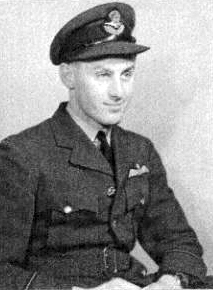
Saturday the
31st March 2007 was a sad occasion for our Region, for on that
day our dear friend Bert Harman died. Bert had been unwell since
just before Christmas and was admitted to hospital in early
March where, following an initial improvement in his health, he
took a sudden turn for the worse about two weeks before he
passed away.
Universally
held in high esteem by all who came to know him, Bert's kindness
and generosity knew no limits: his personal philosophy was to
treat other people better than you treat yourself, and his
Daughter Sarah and Son Jonathan recently, and with good reason,
described Bert as "The Kindest Man they ever knew."
As a Wartime
Fighter Pilot, Bert served with 33 Sqn. flying Spitfires and
Tempests, and in 1945 after an emergency landing following
engine failure aboard his Tempest, he was captured by the
Germans and made a P.O.W.
Bert's
enthusiasm for the subject of Wartime aviation stayed with him
and was a theme upon which, along with many other things, he was
immensely knowledgeable. It was a great source of pleasure for
Bert that one of his former mounts, Spitfire IX. PV202, now
based at Duxford, still flies regularly today, albeit in a
post-war two-seat trainer configuration.
As a member of
the our Society Bert brought that previously mentioned
enthusiasm, as well as energy, creativity and generosity, always
willing to sign a book or print, whether for an admirer or for
the benefit of the Spitfire Society. I should also say that when
visiting the Sales-Stand or an Eastern Region event, Bert was
usually accompanied by his wife Audrey who is, of course, just
as good a friend as Bert was. A regular contributor of
interesting and diverse articles to our Form 700 Newsletter,
Bert also gave us the benefit of his own unique wit, with
humorous items and a constant stream of ideas for our cartoon
page.
To try to
describe the kaleidoscope that was Bert's life would take many
volumes, so perhaps I can conclude this short tribute by saying
that not only was he a wonderful man in so many different ways,
he was also one of a kind; when Bert Harman was made they broke
the mould. We shall miss him very much.
May I take this opportunity to convey to Audrey, Sarah, Jon and
all of Bert's family and loved ones the sincerest condolences of
all of our Region's Membership.
P.W.

--------------------------------------------
Jan Linzel
Part III
If you have not read Parts I & II, you can find
them
here:


Bert Harman continues
Jan's story:
Jan was
not unique, many other Dutch young men made similar journeys,
others did not make it to the U.K. Jan mentions the Swiss labour
camp with 120 Dutch men waiting their chance to join the allied
cause. The Dutch were our true allies at this time, many of our
airmen managed to evade capture with their help. Jan joined 33
Squadron at Selsey Bill and flew on operations to France,
through Belgium and into Holland in February 1945. It was then
that I lost contact with Jan, resuming in 1998 after I
corresponded with a Dutch man John Verhagenfrom Dinterloord This
story I will tell at a later date. Jan now resumes his story in
his own words in letters to me in 1998.
In June 1945
I had to leave 33 Squadron and I was posted with other Dutch
pilots to 322 Dutch Squadron. I did not like it at all; we
hardly knew anyone there and they thought they could treat us as
beginners, some who had done a few not dangerous trips at the
very end of the war were throwing their weight about.
The Squadron
was disbanded in October 1945 and all were sent on indefinite
leave. I got a posting to Pershore in Worcestershire where I was
in charge of the Dutch Ferry Flight. All the aircraft bought by
the Dutch Air Force came to me and I had a bunch of pilots who
flew them to Holland. I had organised an Anson for myself to fly
them back to Pershore. The Anson was a marvellous old aircraft.
It flew by itself, though the winding up of the undercarriage
was a bit awkward when I was alone.
In March 1947
I left the Air Force and studied at the Government Aviation
School for a commercial pilot's licence. After the examinations
I was for a while an instructor at the school, but I did not
like the job and went back into the Air Force. I became a
gunnery instructor on Spitfire IX B's at the Fighter School. In
August 1948 I started on Meteor 11s with Jan Flinterman and
Gerry Wansink; we were the most experienced available. We had no
dual Meteors. In November 1948 No. 323 Squadron was formed, the
first Dutch Meteor Squadron; Jan Flinterman was C.O. and I was
flight Commander. In October 1949 I became C.O. until May 1950.
I then started waiting for a long time for a course on
Thunderjets in the U.S.A.
While waiting
I was sent to gunnery School on the Isle of Vlieland, the second
of the Frisian Islands, to build a range for gunnery and
bombing. I loved the job and the life in these small islands and
I got fed up with waiting for my U.S. posting. The range became
very busy with more and more NATO air forces using it and I
decided to stay there permanently. Nobody else wanted the job;
they were glad they had found a fool that would stay there,
that's what they told me! Another reason was I was a bit too old
for a fighter pilot at 36. I was still flying though, on Auster,
Piper Cub, Harvard and Dominie. Old gentleman's stuff! Several
times they wanted to post me as I was due for promotion, but I
stayed on the job until I got pensioned off, as a Major, in 1973.
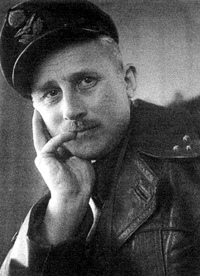
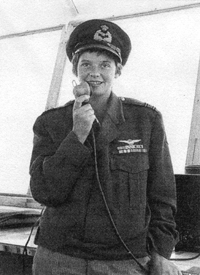
In 1958 I
married a German girl, Marriane, and we retired to live in
County Cork in Ireland.
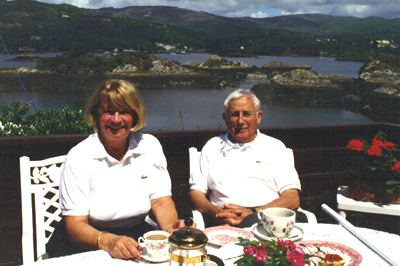
So ends Jan's
story. His story in more detail can be found in his book 'De
Mei-Vliegers (The May-Fliers) by Peter Gerrise. It is in Dutch -
no translation has been found. Any of our members fluent in
Dutch: here is an opportunity to do a bit of translation, a
publisher could be found. I have details of the original
publishers.
Bert Harman
(This
document arrived with me some months before Bert died, and sadly
the other stories that he had to tell will now go untold. The
publisher of De Mei-Vliegers is Bosch and Keuning.)
P.W.

--------------------------------------------
Visit to Hawker Restorations Ltd
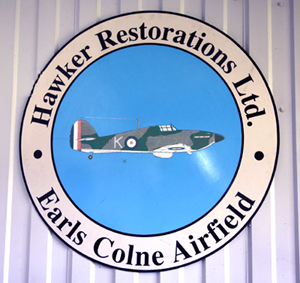
Members of the Spitfire Society Eastern Region
were very fortunate to have recently visited Hawker Restorations
Limited and Historic Flying Limited.
Milden in Suffolk is home to Tony Ditheridge owner of AJD
Engineering and Hawker Restorations Ltd. Situated in stunning
rolling countryside, this facility has borne some truly
exquisite restorations. We were fortunate to be allowed behind
the scenes to witness first hand the painstaking effort that is
put into restoring their current projects.
Upon entering we were delighted to see an original SE5e under
rebuild to fly. This aircraft has been progressing slowly for
many years but has only recently arrived at Milden for
restoration to full airworthy condition.
Next to the SE5 stands the partially complete fuselage of a
static replica of the Mew Gull G-AEXF. This project was
commissioned by the late Alex Henshaw who flew the original
aircraft from London to Cape Town in just four days, ten hours
and sixteen minutes back in February 1939. AJD Engineering
restored the original Mew Gull G-AEXF after its crash at
Shuttleworth and were the obvious choice to build a replica
which will initially be displayed at the RAF Museum Hendon as a
tribute to the record breaking pilots of the 1920’s and 30’s.
In a room to the side a Hurricane Mk1 Cockpit section,
‘doghouse’, is being crafted from plywood and Canadian Spruce.
Timbers are selected following a rigorous visual inspection that
aims to eliminate sections with too many knots or cross grain. A
sample of those selected are subjected to crush testing prior to
any timber being used in the reconstruction of an aircraft.
In a hangar adjacent to the airstrip three Hurricanes are
concurrently being progressed to airworthy status. G-HRLI
belongs to Hugh Taylor and saw RAF service as V7497,
construction number 41H-136172, built in 1940 by Hawker Aircraft
Limited. The aircraft was shot down over Kent in August 1940.
All Hurricane airframe components are joined together using
bolts.
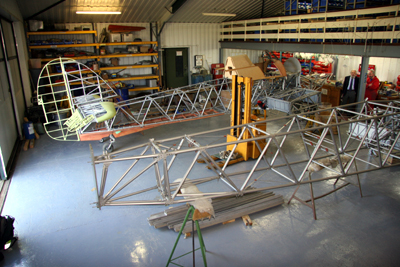
G-ROBT is a Hurricane Mk 1 originally built in 1940 by Gloster
Aircraft. Fitted with a Merlin 35, this aircraft saw RAF service
as P2902 and is being rebuilt for Rick Roberts.
RCAF 5403 is a Hurricane Mk2B built by the Canadian Car Foundry
Company in 1940 as construction number CCF/R20023. Now
registered G-HHII it will be joining Peter Teichman’s Hangar 11
collection at North Weald once completed.
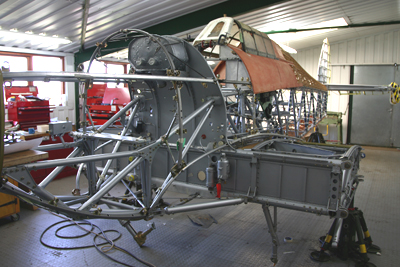
Thanks to Tony Ditheridge for providing access to his facilities
and to Phil Parish for showing us around and answering our
questions.
Tim Clark
Visit to Historic Flying Ltd
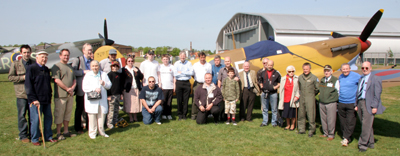
HFL’s hangar is dotted with Spitfire projects and
spares. Mark Parr provided a fascinating insight into the work
that goes on daily to restore Spitfires to airworthy status.
Work has commenced on the former Burmese Spitfire Mk IX, UB425,
initially serialled in the SL63? range. Confirmation of the
exact serial is expected shortly but it is known that it was one
of three conversions to PRIXe configuration. The camera ports
were added to the rear fuselage following her transfer from the
Czech Air Force to the Israeli Air Force in February 1949. The
IAF serial was 2042.
After operating in the photo reconnaissance role for 6 years
UB425 transferred to Burma, and during overhaul, returned to
LFIXe configuration. The aircraft was retired and displayed on a
pole at several Burmese locations. By the time she was sold in
1999 only the bare structure remained and a Harvard tail section
had been grafted to the rear. The future looks much rosier now
with a new tail unit and replacement frame 5 already
manufactured and her history now traced all the way back to
construction.
PL344 is now one of Tom Blair’s collection of airworthy fighters
based at both Kissimee, USA and Duxford, UK. Restored to
airworthy status in 2000 this aircraft is currently undergoing a
wing rebuild to install additional fuel tanks in the armament
bays.
PL983 is currently under rebuild to fly following its tragic
accident in Rouens, France in 2001. The aircraft was on static
display at Old Warden from 1950 to 1983 and subsequently
restored to airworthy for Roland Fraissinet. The rebuild
replaced the original curved screen with an armoured screen;
however the original was kept and is now being used in the
current restoration.
A collection of boxes stacked on shelves represents the
remainder of Seafire Mk III RX168. It is likely that these
original components will be incorporated into an early mark
Spitfire rebuild. A new build fuselage originally created for
RX168 is also likely to end up in another aircraft.
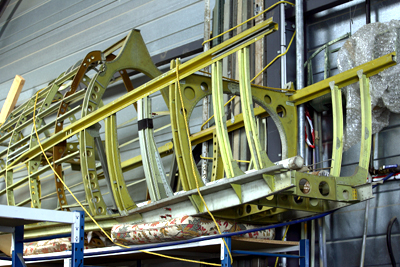
Mk XVI RW386 coded NG–D is a recently completed restoration
which has since be flown to a new owner, Biltema corporation
in Sweden. Now registered SE-BIR, she left Duxford on the
29.5.07 piloted by Bertil Gerhardt.

Spitfire LFIXc MJ271 which has the spent the last 60 years in
Holland, has been acquired by HFL for restoration to airworthy.
The wings will soon be going in to one of two sets of wing jigs.
A set of wings typically takes a year to rebuild. With two jigs
HFL are now able to undertake two major restorations
consecutively.
Battle of Britain veteran Spitfire Mk 1, P9374 is under rebuild
and when finished will be the oldest airworthy Spitfire. There
are many components that survived being immersed in sand and
salt water on a Calais beach, following the crashed landing
after being shot down in May 1940. The parts are either being
cleaned up and utilised in the rebuild or are used as templates.
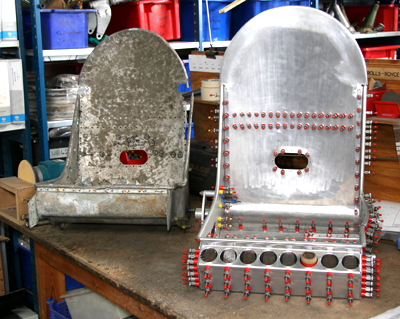
During the tour HFL‘s Spitfire IX(T) ‘H98’ and Tom Blair’s
Spitfire XVIe piloted by John Romain and Cliff Spink
respectively, returned from a training sortie, and buzzed the
airfield. Tom Blair having clearly enjoyed his experience in the
rear of ‘H98’.
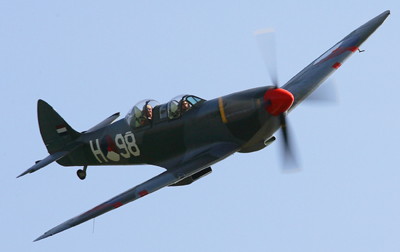
Thanks to HFL’s owner Karel Bos for providing access to his
fascinating facilities and to Mark Parr for being on hand to
explain what the parts were and how various processes work.
Tim Clark

--------------------------------------------
Lancaster Navigator,
W/0. John Lee
Part II
Interviewed by Peter Wesson
If you have not read Part I,
you can find it here:


Onto OP'S
'One of the most marvelous things I've ever seen;
I took part in a couple of Thousand Bomber raids. Daylight they
were; you've never seen anything like that. You imagine, a
thousand 'planes! There were planes above you, planes below you,
planes out to both sides and we were always told when you're
flying on raids, or anything, you mustn't get off the track more
than three miles, if it's more than three miles you've got to
D.R. and alter course. Very often the German fighters used to
patrol on the outside. They'd wait for somebody to get out there
and they'd jump on them. They wouldn't come into the stream
because there were so many guns there, you know.
This day was something different, you couldn't
get them all in a stream anyway, a thousand of them, they were
coming from all over the place.'
I asked John what the destination of the raid
was and he checked the details in his Log-book:
'Hamburg. That was on the thirty-first of the
third 1945. The idea was that apparently there's a bridge over
the river in Hamburg and of course by this time the invasion had
taken place and the troops had moved well up, and they wanted
this bridge blown up. So they got, I think they were Halifaxs
and they'd made this ten-ton bomb. Of course the biggest we had
was about five or eight tons we probably carried in the
Lancaster. But his was a ten-ton, there was no shape to it -
just like a big dustbin - and they took the bomb-doors off the
Halifax and slung it sort of underneath, in the bomb-bay.
We were doing the raid with the Halifax's but
they took off before us because of all this. They weren't as
fast as a Lanc anyway, nor did they have the ceiling that a Lanc
did, so we took off later and met them as they were going in to
the target. When they released it well, I couldn't believe it,
it didn't go down like a bomb, it just went like this.' (John
gestures straight down with his hand, P.W.)
'But for some reason I don't think we hit the bridge at all.
That was the only drawback with the Lancaster or any of the
'planes, our bomb-sites were shocking, they were really
Heath-Robinson affairs. We had no Smart-bombs like you've got
now, you know, you just let the bomb go and it finds it's own
target. But we did our best.'
The other Thousand Bomber raid that John went on
was to Dortmund on the thirteenth of March 1945. The Squadron
was based at Waltham near Grimsby, and he recalled that their
pilot 'Sandy' Taylor's first Operational Sortie was as the guest
of a different crew..
'He went on a raid with another crew as
familiarisation, just to show him what it was like, you know, it
would be a bit of a shock if you went on a raid and they started
firing at you and you'd never seen that before. He went on the
Dresden raid with them, but we didn't go.
Well then, the next raid was Chemnitz. That's
quite close to Dresden, and that's quite a long trip too, a
complete round-trip there was nine hours and thirty five
minutes. There was a story behind that one too: we always had a
Met. Briefing before we went, and you'd get Met. winds (what you
could expect them roughly to be.) That's to enable you to make
out a complete flight-plan, so that if anything happened to the
Navigator, the Pilot could get hold of that and he could
probably fly back on it. Quite sensible really. Anyway we
started off, and they never made it simple, you could never go
straight there, oh no, that's too easy. You'd go out, first leg
there, you'd get the turning point and you might go over this
way so far, another turning point there. Now all these turning
points had to be made within about a minute, so you'd be on your
toes all the time, you'd be "slow down a bit, open up a bit,
slow down a bit, alter course!"
The idea was that if you just went straight
there, like the Americans did a lot of that, the Germans could
more or less estimate where you were going to go and of course
they'd be waiting for you with the fighters. Anyway, we set off,
and we were supposed to get a hundred mile an hour headwind on
the down-leg into the target area. Well I got a wind of a
hundred mile an hour tailwind! So that means that instead of
doing about two hundred miles an hour groundspeed, you've got
something like three hundred mph ground speed, and by now we're
getting close to the target. So I said "You've got to slow
down!" We were about ten minutes earlier than we should have
been. He (the pilot) said "Well, I can't slow down any more," I
said "Put your wheels down or something," and he said "You've
got to be joking, I'm not putting my wheels down at this
height!" We couldn't just go in and drop the bombs because the
Pathfinders had to come in and drop the markers down to bomb. So
there's only one thing you can do; you've got to go through the
target and go round. Well it finished up that they all were
doing this, it was like a circus! And it was night-time by the
way, and of course you couldn't see any other aircraft, the only
time you knew there was an aircraft anywhere near you was if he
was somewhere near the front of you you'd feel the vibration
from the slipstreams. Well, we all came round, and then you've
got to get back into the stream sort of thing, and then by that
time, the Pathfinders had been in and dropped the flares down.
But it was hair-raising that night, you just
didn't know where anything was, you know. And of course another
thing was, the system they had; we used to bomb from different
heights. So you'd get some in top height, some in the middle and
some below. Well you'd be given a height, so you'd have to bomb
at say twenty thousand feet, that's the top height usually, or
eighteen thousand and another thousand below that. Well quite
often they'd get a bomb come through the wing or something like
that, oh yes, it used to happen ... we had incendiaries go
through, into the front of the plane! It's not until you do a
daylight raid that you realise all this, because on a daylight
one you can see the 'planes around you. Well I mean, when you're
coming into the target there you look up and there's a plane up
above you, you know! And he opens his bomb doors, he can't see
you but you can see him! And he lets the bomb go, a five-hundred
pounder, and it just missed the tail, and I said to old Nobby
(Rear Gunner) "Did you see that?" he said "See it, I could have
struck a match on it!"
Did you ever encounter problems with enemy
fighters?
'No, we didn't actually; we've seen a few of
them, in fact one night on a night raid I saw a jet that was
flying then; it was the first, the early one, for the Germans.
They were before us. I was looking and I could see this like a
flame coming out, and I said to Nobby "What's that?" and he's
had a look, "Don't know," because of course we hadn't heard
about these things. Anyway, it didn't come any nearer, it didn't
go for us. But we used to see them, they'd patrol on the
outsides more often. If you stayed on course, on this three-mile
path like they told you to, it was pretty good really. But there
was one raid, we weren't on it, I forget where it was but we
lost a hell of a lot of planes. What they did, the Germans,
they'd altered their tactics. Instead of patrolling up and down
they came in on the side, into the stream like that, and they
shot down a hell of a lot of them in that particular raid.'
Looking through his Log-book, John recalls that
in one month alone he went on eight raids, including Kassel,
Paderborn, Bremen, Misburg and Hannau:
'I thought they were trying to get rid of us!'
The aircraft which his crew used most often was
code-lettered 'K', but other Lancasters in his Log book include
D, P, J and H.
'In between this lot (the bombing raids) they
used to send us on cross-country and high-level bombing
practice. And air-to-air firing.
One more notable raid, on the ninth of the fourth
we had a raid on Kiel, it was a night one, and that was six
hours and twenty minutes, and the idea was to go and bomb the
U-boat pens. When we got there we started the bombing runs and
I'd finished navigating; it's all over to the bomb-aimer then,
you know, I said "There's the target, it's yours now," and he
used to take us in. And I'm looking out of the windows over the
top of Sandy, and there's these rockets coming up, big clusters
of them. I thought "Well that's funny, it's not like
Anti-aircraft fire." Anti-aircraft fire's quite pretty if it
doesn't hit you, it's different colours, like fireworks.
Anyway when we got back, and of course we'd taken photographs
with the Photoflood and so on, and they put them up on the wall
and they said "A poor raid, a very poor raid. But you sank the
Admiral Scheer!" The Admiral Scheer was in there and we didn't
even know it was there! We'd turned it over! Not me personally,
I don't know whether we'd hit it or what, we could have - it was
in harbour. They were most annoyed because we hadn't hit the
pens, but then the blooming Scheer had got turned over!'
Looking back down the years, John recalled an
amusing item regarding parachutes:
'In the Parachute Section, you used to go over
there to collect your parachutes, and you'd go there and there's
a big notice over the door and it said "If your parachute does
not open, bring it back and we'll change it!'
Wartime Lancaster operations were not always
belligerent, as this trip to Leiden in Holland on the 29th of
April 1945 shows:
'What they'd decided to do, they'd send some
Lancasters not to bomb it but to fill them up with food and
stuff like that, because in Holland they were starving. Well we
were chosen along with another five from Waltham to go on this
drop. Now what had to happen was, we had to go in and they'd
light a fire in this field, the Resistance or whoever it was,
and we were supposed to go in at a hundred feet. Now that's
pretty low for a Lancaster a hundred feet, and at a speed of a
hundred miles an hour! Well the only way you could get a hundred
mile an hour is to drop your wheels, so we had to drop the
wheels and put part flap down as well. Well we didn't mind
dropping the food, but we thought "That's a bit off, a hundred
feet," anyway, we set off - I'll never forget this one - and we
went over the Channel, it was only a short trip as you can see
(referring to Log-book) it only took three hours and five
minutes, hedge-hopping all the way. You could see they'd got
overhead electric train cables or something, we were just over
the top of them, and I'll never forget, there was a Dutchman
there riding on his bike and we came along just over the top of
him and he fell off, he couldn't believe it, you know! By the
way, we'd been told "Whatever you do, if you see any Germans
don't fire at them. If they fire at you you can fire back, but
otherwise, don't fire at 'em." So anyway, we get there and we
come in and we had the door open at the side and the stuff
didn't have parachutes on, we were just chucking it out in big
sacks, bags of flour and salt and all sorts of things. We came
out up over Amsterdam, I've never seen anything like it; windows
open, all waving, waving big sheets at us, it was tremendous,
but there were no shots fired, nothing. As we came out crossing
the coast, there was a company of Germans marching up and down
the promenade and they sort of looked at us and we looked at
them!'
As part of 'Operation Manna' John made a further
three trips, this time to Rotterdam, with the same crew. 'Sandy'
Taylor was now a Flight Lieutenant and would later be promoted
to Squadron Leader.
To be continued
.....

--------------------------------------------
Website
If you're
reading this then you have already discovered our new website -
so not much more to say on that subject. However, I still need
feedback from Spitfire Society members (and any other visitors).
So please let me know what you think of the site - and what, if
anything, you would like to see changed, removed or added.
I look forward
to hearing from you.
gerrycrutchley@spitfiresociety.org.uk

--------------------------------------------
My Trip to the Purfleet Heritage Centre
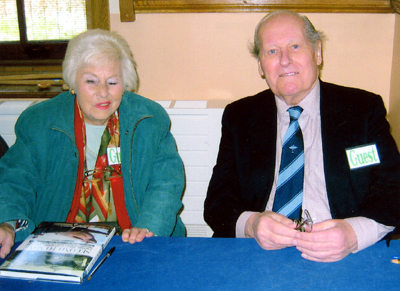
On 25th March after a very
enjoyable and interesting visit with the Spitfire Society to the
11 Group H.Q. Group Bunker at Uxbridge, I made my way,
accompanied by Steve Williams, to a pre-arranged Book Signing
that was to take place for Service Personnel who had served at
RAF Hornchurch, that afternoon at the Purfleet Heritage Centre.
On arrival at the Museum we
were warmly greeted by Richard C. Smith and his grand group of
Helpers, after which I was escorted to another building by
Richard to meet eight other Hornchurch Veterans including lan
Blair and Peter Ayerst. We spent the next couple of hours
signing books in between the general chat about our experiences
and our service life at Hornchurch.
After the signing we were
presented with a copy of the book we had just signed and an
unsigned print, followed by a photocall.
On returning to the Museum we
were warmly greeted again by the Helpers and a group of singers
singing wartime songs! This is a wonderfully well-stocked,
well-organised and very friendly Museum and I recommend you pay
it a visit.
We finished our day with an
enjoyable meal at the Purfleet Hotel followed by coffee in the
Lounge overlooking the Thames.
Audrey Morgan

--------------------------------------------
Eastern Region AGM
Old Warden, April 14th 2007
This years AGM went as well as
could be hoped for under the circumstances, despite the speaker
being taken ill, one Pat Butler Award nominee failing to
materialise, and a record low turnout from the membership.
However, we pressed on regardless, with Sqn.Ldr. lan Blair DFM,
RAF (Retd) kindly stepping in to give a talk around the famous
Skae Brae incident or the "Tussle in the Stratosphere" as it has
become known, where he and his wingman, flying pressurised
Spitfire Mks. VII and VI respectively, intercepted at high
altitude an Me109 reconnaissance aircraft over Orkney.
Chasing the '109 into a dive
lan Blair destroyed the aircraft, the resulting debris causing
engine damage to his Spitfire, which he was obliged to put down
in an emergency landing on the tiny island of Stronsay. This
short summary merely covers the basics of the story and is a
very poor substitute for hearing the account first-hand; many
thanks to lan for a riveting talk. Next on the agenda was the
Pat Butler Memorial Award, which is granted each year to two
outstanding ATC Cadets in memory of this Region's Founding
Chairman. The Award was this year presented by our Newsletter
Co-Editor and former Regional Chairman Dennis Nichols to ATC
Warrant Officer Antoni Otulakowski of No. 134 Sqn. (Bedford). An
outstanding cadet, Antoni has served in the ATC for nearly six
years and has flown in a wide variety of helicopters and tutor
aircraft and last year completed his Gliding Scholarship, flying
solo in a Vigilant powered glider. He has several times
represented his Region at athletics, and two years ago was the
ATC's cross-country representative. On top of all this Antoni
has been a guest at both 10 Downing Street and Buckingham
Palace. Antoni hopes to go on to join the Royal Navy as a
Warfare Officer. Congratulations on your achievements Antoni,
and the best of luck with your future career. Do please stay in
touch, as we would very much like to know how you get on.
After the ceremony Group
Captain Ford, head of the ATC in our Region gave a short address
thanking the Spitfire Society for it's continued support of the
ATC.
The AGM itself went ahead
after lunch, with David Williams being officially elected as
Chairman, and the current Committee re-elected. David welcomed
Alyson Long who once again joined us from HQ. The tone of the
meeting was upbeat, with David welcoming members Jason Amiss,
Gerard Crutchley, Robert Schofield and Paul Plummer onto the
Committee. David also took the time to thank Dennis and Dorothy
Nichols for the work they put into producing and distributing
the Newsletter. Much missed were Len and Dorothy Stillwell,
Peter Cunningham and Norman Lyons who for reasons of health were
unable to make it this year. A moment was also taken to remember
our friends Harry Griffiths, Philip Insley, Alex Henshaw, and
Bert Harman, who all passed away recently.
On an optimistic note, David told us that we are booked to
appear at all six Duxford Airshows (new Sales-Stand Volunteers
always welcome, it's for a good cause, and we don't bite!) plus
the two Special Events. Organised visits included HFL at Duxford
and Hawker Restorations in Suffolk, with more in the offing
provided there is support from the membership.
In spite of the poor
attendance, the raffle still raised a healthy £73.00, so well
done indeed to Audrey Horwood and Audrey Morgan. Special thanks
also to raffle-winner Gerry Crutchley who very kindly returned
the prize, a handsome signed, framed print, to the Society for
future use. Thanks also to Steve Beale for arranging the use of
the hall at the Shuttleworth Collection for us.
P.W.

--------------------------------------------
Notices
Firstly, hearty congratulations to Gerry Crutchley who has now
got our new Eastern Region Website up and running; it really is
a marvellous, professional-looking site and I can highly
recommend it.
Well done also to Jason Amiss who is now doing wonderful work
handling the Spitfire Society's stock, and to Bob Schofield
whose first organised visit for us, a trip to Historic Flying at
Duxford, went magnificently; great stuff, lads, keep up the good
work.
The next big piece of news is that the 2008 SPITFIRE SOCIETY
CALENDARS are now in stock! Alyson Long at H.Q. has put a great
deal of effort into preparing these calendars, and it shows;
with superb first-class photographs of Spitfires (all taken by
Spitfire Society Members!) on every page, the whole thing looks
terrific and would make a splendid addition to any wall, whether
for yourself or as a very special and unique gift. (A
particularly nice touch in my view is that each month carries,
in its bottom right-hand corner, one of Pete Wesson's fine
Cartoons L.D.N) So, priced very competitively at £10.00 (or
£12.50 including postage) I'm sure they will sell very quickly.
As they say, "ORDER YOURS NOW TO AVOID DISAPPOINTMENT!!") The
calendars will be on sale from our sales-stand at air shows, or
you may order directly from Jason Amiss:
jasonamiss@spitfiresociety.org.uk
To tie in with the article by John Lee on his days as a
Navigator in Bomber Command, a very small number of A4 sized
prints of a drawing by Peter Wesson depicting one of the
Lancasters that John flew on are available to Spitfire Society
Members on a first come first served basis.
Signed by John Lee,
the prints are £6.00 each inc, all profits
to the Spitfire Society. Please contact Peter Wesson for
details:
peterwesson@spitfiresociety.org.uk
As you will have read in the latest 'Spitfire' journal there are
still posts within the Society that urgently need filling,
perhaps most importantly Office Assistant and Treasurer. The
latter position has been held for many years with great success
by Peggy Alien, who is now long overdue to retire from the post,
and has been hanging on in the hope that someone would come
forward to take over; this situation cannot continue and it is
of the utmost urgency that the position be filled, so if you
feel that you or someone you know may be able to help with this
or any other job at HQ, please contact the Executive Committee.
You will also have read of the threat by developers to our HQ
premises at Southampton, and again, if you have any ideas or
suggestions for a new location do please come forward.
On the subject of extra assistance, Eastern Region are becoming
increasingly involved in assisting HQ in various areas, and we
are still very busy raising funds at air shows. We are always
pleased to welcome new helpers (or indeed, welcome back previous
helpers who may have drifted away) on to the Sales Stand. There
are lots of benefits to being a helper, for example, the work is
most rewarding, you get to meet lots of interesting people who
have an interest in the Spitfire (frequently including people
who may have flown or worked on them during the war!), and there
is great satisfaction in helping with such a good cause. It can
also be a lot of fun, so if you think YOU might like to get
involved with this, or indeed any other aspect of Eastern
Regions' activities including Committee work, then PLEASE
contact the appropriate member - we look forward to hearing from you!
P.W.
Committee members' emails can be found here:


--------------------------------------------
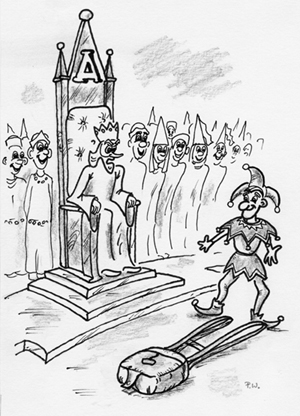
Fool! I said "organise a
Sparrow-shoot!"
Pete Wesson, from an idea by Bert Harman
--------------------------------------------
Extract from the Memoirs of Reg Skolfield
Night flying in Peterborough
was unnerving. There was no radio beam and you had to keep radio
silence. You had to be damn sure you kept that tiny airfield
with its dim flares within your sight, or else.
Although there was a blackout
everywhere, the glow of the cities was quite easy to identify.
Even so it was dark with menace in the air. On the same evening
that I was night-flying, a fresh-faced young Army Lieutenant,
seconded to the RAF, was shot out of the sky by a German night
raider. The threat of death was very near, all the time. On the
ground we lived it up. Jack was the very devil. He was
quick-witted and charming to the Nth degree. All he had to do
was to say Chug-a-lug, and everyone would immediately down their
pints in one go. On one of these occasions I overdid it, and
when leaving the Mess, found the ground falling away from me
like the deck of a storm-tossed ship. I was put to my bed by
Jack, and Bud Draper tried to pour a bottle of whisky down my
throat. The bed was absolutely soaked in the morning. Poor Bud
Draper, he was killed in Wales on a drogue-towing exercise. And
John Raynes too. He was with us at Eagle Pass, and a sweeter
natured fellow you would never meet in years. He was killed in
an accident when flying a Hurricane. His father and my father
had known each other in Quorn, Leicestershire in early days.
Never once did I have the temptation to fly low over my father's
house in Lincolnshire; I felt I would have done something stupid
like hitting the telephone wires, or the church steeple next
door to us.
When our posting did come it
was a bit of a shock. From September through to May we had
coasted along and even in the hated Master I had put in almost
seventy hours. Now we were to be sent East, not to Europe, but
East. We sailed on the Britannic from Liverpool, first out to
the Azores, then joining a convoy of twenty ships through the
Mediterranean. The contrast in weather was startling. Everyone,
including the many WAAFs started out wearing our blue uniforms
and even greatcoats. By the time we got to the Med. everyone
stripped to the minimum in the heat, and the prim and proper
WAAFs of our homeland changed overnight into seductive sirens.
Once I noticed men going up and down a stairway, but studying
carefully a girl sitting at the top, just to one side. I climbed
up this stairway and soon saw the reason for this curiosity: the
girl was not wearing anything under her dress, and the way she
was sitting on the deck revealed all!
I shall never forget the ships
steaming in two columns, in line astern and we in the middle
sailing into the glorious sun atop blue, so blue waves. We
docked at Port Said with traders everywhere in small boats
trying to sell us their wares, so different from the ports in
Britain. We took a train to Cairo, and by nightfall were
comfortably established in a room in the Heliopolis Hotel.
Jack and I visited the
Pyramids, the Cairo museum, the Zoo, the Sphinx, Shepherd's
Hotel, where the rulers of Empire would gather, and relaxed by
the Hotel pool, watching beautiful girls in the sun. We were
invited to a party by the wife of a well-to-do Egyptian. She had
two good-looking daughters and the next day I telephoned for a
date. The mother asked me over for coffee, and I found myself
escorting her to a movie for the afternoon. She was American,
about forty years of age and very very nice indeed. From that
time on we were quite close and used to go to the smart Gezira
Club and drink gin and vermouth, or go to cinemas. She would
prepare for me at home rice with fried egg plant which was
delicious after several gins. When we were posted to Palestine,
she told me she would give me a thousand pounds after the war so
that I might tour the world. I did not keep in touch with her
after we left Egypt, but when I was in Canada three years later
I contacted her through her Bank, which address she had given
me. I saw her in Springfield on my way to New York, and she was
in love with a local writer, one of whose stories had been made
into a film for Gary Grant. She wrote me in New York saying that
on the way back from the station where she had bade me farewell,
she cried.
With Mary too, back in San
Antonio I had not kept in touch, but she wrote me in Burma,
saying she had met a man she liked and would I be going back to
Texas? If so she would wait for me, but this chap had asked her
to marry him. I replied saying that I could never be sure that I
would ever get out of Burma, and that she should go ahead. Much
later someone said to me 'Oh that was a 'Dear John' letter. But
I am sure Mary had a much more fulfilling life than she would
have done with me. Jack fell sick and was two weeks behind in
our posting to 74 OTU, in Petah Tiqvah, Palestine. But in
consequence he was eventually returned to England, and with
Jamie Morrison, who was an instructor at Petah Tiqvah, he flew
Tempests and according to them both in their speeches at Jack's
50th Wedding Anniversary celebrations, they had one hell of a
good time in Germany (probably riotous). Jamie was best man at
Jack's wedding.
The course in Palestine was
about Tactical Reconnaissance, and we were carefully trained in
navigation, sector recces, vertical and oblique photography, air
to air gunnery, air to ground gunnery, formation flying, low
flying, and so on. We flew Hurricanes, Harvards and Spitfire
V's. These were the ones with clipped wings. They were
undoubtedly delightful airplanes, and so easy to fly. Accurate
too and I was able to fly on one occasion at 5,000 feet near to
Damascus where the air was balmy, with my wing resting atop
another. But the Spitfire was not suitable for desert work for,
with one small radiator, you had to be quick about getting off
the airstrip: If you were too slow the temperature would rise
rapidly and you had to switch off and be towed in. I was very
good at practical work in taking photographs in the air, in fact
I came out on top, which qualified for a prize. However, I
didn't get it because I came out bottom in class on theory!
One time I set off in a
Hurricane low level along the valley to Nazareth. As I circled
the town I came below a steep hill, and have thought since, was
that the hill where the angry local inhabitants tried to throw
Jesus down? There was also the mail run, which everyone had to
do on the Course. This meant flying to Cairo, stopping off at
Ismailia, delivering mail there and flying to Heliopolis, where
we stayed the night (I well remember this, it was in an adjacent
hotel with bed bugs crawling all about, and I was obliged to
keep the light on all night), returning to Petah Tiqvah the
following day. I do not know of anybody who really enjoyed this
caper.
A New Zealander named 'Robbo'
shared a room with me. He was swarthily good-looking, and a wow
with the ladies. He shared many stories with me, one of which
involved his seduction of a Jewish NAAFI girl. He was making
love with her when he looked up and saw people watching them as
they leaned against the iron railings above. This was at the
pier, and quickly Robbo and the girl rolled over and over in the
sand, still linked together, underneath the Pier. Poor Robbo. He
was a delightful fellow, full of entertaining stories, but for
him, it was a short life and a gay one. He was killed in Italy,
he and his Hurricane shot down over the mountains.
When in the Spitfire. I flew
low over the water opposite Tel Aviv. Jack said later that he
had been on the beach with a friend and they had waved and
shouted out: "Lower, Lower." I had never been confident over
water, and found it difficult to estimate one's height, and was
frankly scared of dipping the prop.
At a party in town, we were
served prawns. The next morning the whole camp, it seemed, was
ill. The pain was horrendous, and it was as though one's stomach
was being squeezed relentlessly in a vice. There was absolutely
no control over body functions, and I eventually sat on the
floor under a hot shower for an hour at least, not caring
whether I was scalded, as long as the agonising pain in the
abdomen was eased, however slightly. We had alas forgotten the
wise advice of Moses. Awaiting the posting to India soon after
in tents near Cairo, the effect still lingered, and the sands of
the desert covered a lot of what we were totally unable to
control.
Reg Skolfield
(to be continued)

----------
Form 700
is produced by Peter Wesson and Dennis Nichols. Photographs by
Peter Wesson, Tim Clark & Eric Horwood.
The previous issue of
Form 700 (#50 Spring 2007) can be found here:


